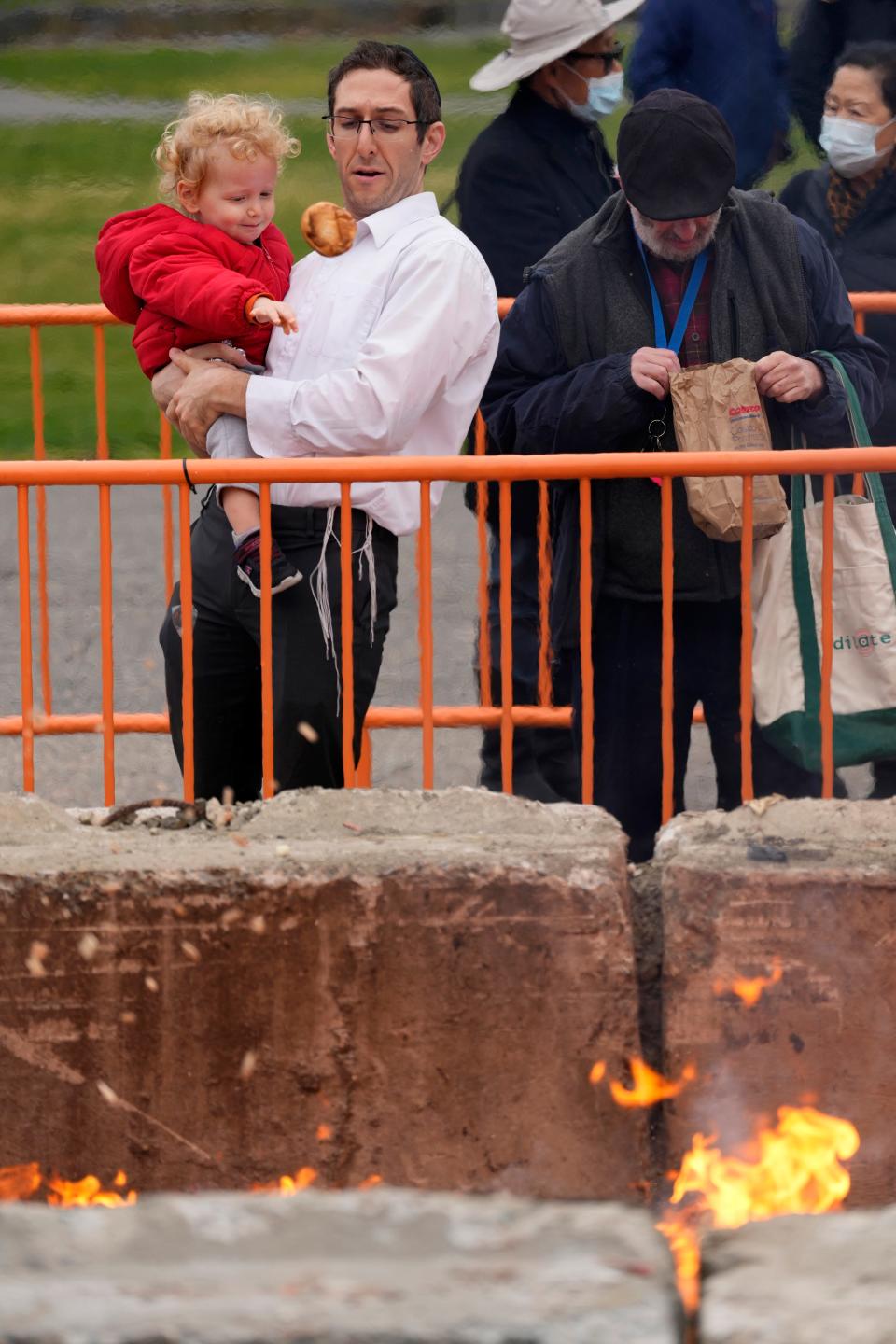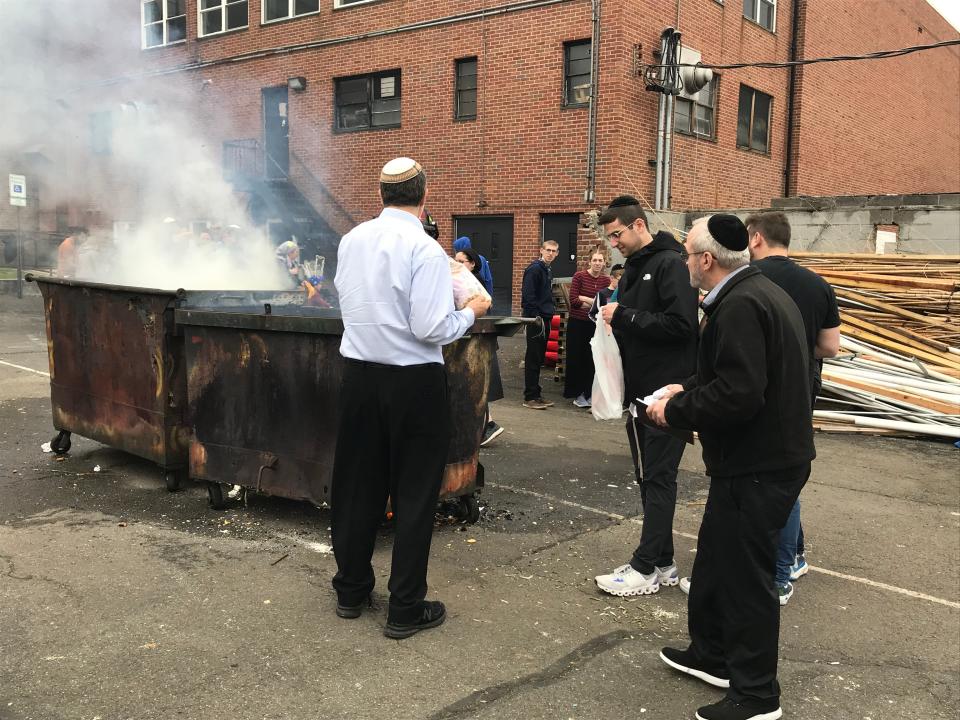What is chametz and why is North Jersey burning it? Your guide to Passover traditions
Before a crackling fire in Passaic on Wednesday, dozens of Jewish families continued a Passover tradition meant to cleanse their households and their souls.
The Jewish community gathered in Third Ward Park for the annual Burning of the Chametz, at which bread and other leavened food was tossed into a firepit. A similar ritual was held Wednesday at the Teaneck Jewish Center.
Participants cast away small packages containing morsels of bread, crackers and cereal as a means of ridding their homes of leavened products before the holiday, scheduled to start at sundown on Wednesday. Many also donated their unopened chametz to the needy.
So what is chametz? Why is it burned? Here's a look at Passover and the traditions that thousands of North Jersey families will be honoring this week.
When is Passover and what does it commemorate?
The eight-day holiday (in Israel, it's only seven days) commemorates the liberation of the Hebrews from Egyptian slavery, believed to have occurred about 3,300 years ago. The escape forms the basis of the Book of Exodus in the Bible. Passover begins this year on Wednesday evening and will end on the evening of April 13.
So what is chametz?
The Israelites fled Egypt in such haste, they didn't have time to wait for their bread dough to rise. As reminder of their sacrifice and ultimate redemption, Jews today abstain from eating leavened bread or other foods made from fermented grain during the holiday. Jews refer to leavened items, which must be discarded from the home before Passover, by the Hebrew term "chametz" (pronounced "HA-metz" and also spelled "chometz.") It includes anything made with grains like wheat, oats, rye barley and spelt.
What is biur chametz?
Jews often destroy leavened food in a ceremonial burning called "biur chametz." According to Jewish tradition, the burning isn't just a physical ritual but also a symbolic act in which people are encouraged to rid themselves of bad character traits.
Hoarding Haggadahs: I can't stop buying Haggadahs for my Seders. Here's why I'm obsessed with collecting them
How is Passover observed?

The highlight of the holiday are big dinners, known as Seders, which blend religious rituals, song and storytelling. Participants at the Seder, which means "order" in Hebrew, eat symbolic foods including matzo, an unleavened bread made of flour and water. Those at the dinner recite the story of the Exodus from Egypt, following the ancient text known as the Haggadah. Every family may have its own traditions but overall, the Seder is designed to engage children and encourage them to ask questions.
What are the symbolic foods on the Seder plate?
The Seder plate is the focal point of the night and it sits at the center of the table where everyone can see the divided platter holding the evening's symbolic foods: matzo, a shank bone, a hard-boiled egg, bitter herbs, a vegetable and charoset.
The bone, which is the only item on the plate not eaten, is a reminder of the Passover sacrifice; a roasted chicken or lamb shank can be used but vegetarians often substitute a broiled beet. Charoset, a delicious paste made of fruits and nuts, symbolizes the mortar the Jews used when they worked as slaves in Egypt. The egg, which should be roasted and slightly burnt, represents the circle of life and the rebirth of the Jewish people following years of enlsavement.
The vegetable, symbolizing spring, can be anything green. Many use parsley, dipped in salt water to symbolize the tears of the slaves. Bitter herbs − often romaine lettuce or fresh horseradish − recall the bitterness of slavery.
More: These are our food editor's favorite Passover dishes, recipes. Enjoy!
Why is Passover so important to Jews?

The Exodus was regarded as the "birth" of the Jewish nation and is the oldest continuously observed religious ritual in the world, Jewish scholars say. Its lessons "of struggle and identity continue to form the basis of Jewish consciousness 3,300 years after the event," according to Rabbi Shraga Simmons of Aish.com, a Jewish culture website.
The holiday also incorporates themes of freedom, spring renewal, a Jewish homeland, social justice and recognition of people who are oppressed today.
Deena Yellin covers religion for NorthJersey.com. For unlimited access to her work covering how the spiritual intersects with our daily lives, please subscribe or activate your digital account today.
Email: yellin@northjersey.com
Twitter: @deenayellin
This article originally appeared on NorthJersey.com: Passover traditions: Why burn chametz, Sedar plate and more

